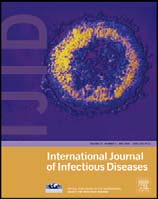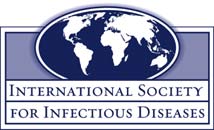Microsoft word - psa2013_paper-draft10.docx
“Cameron’s problem with women”: the reporting and the reality of gender-based trends in attitudes to the Conservatives 2010-11 Roger Mortimore, King’s College London/Ipsos MORI PAPER FOR THE POLITICAL STUDIES ASSOCIATION ANNUAL CONFERENCE, CARDIFF, MARCH 2013 In the autumn of 2011, there was significant discussion in the British press about the level of support among w


 International Journal of Infectious Diseases
j o u r n a l h o m e p a g e : w w w . e l s e v i e r . c o m / l o c a t e / i j i d
Outcome of orthopedic implant infections due to different staphylococci§
Dorota Teterycz Tristan Ferry Daniel Lew , Richard Stern Mathieu Assal Pierre Hoffmeyer Louis Bernard Ilker Uc¸kay
a Orthopedic Surgery Service, Geneva University Hospitals and Faculty of Medicine, University of Geneva, 24, Rue Micheli-du-Crest, 1211 Geneva 14, Switzerlandb Service of Infectious Diseases, Geneva University Hospitals and Faculty of Medicine, University of Geneva, Switzerlandc Service of Infectious Diseases, Raymond Poincare´ University Hospital, Garches, Franced Assistance Publique-Hoˆpitaux de Paris, Garches, France
Background: Comparisons of different staphylococci in orthopedic implant infections have rarely been
reported. In this study we assessed total joint arthroplasty infections and other orthopedic implant
infections due to methicillin-sensitive Staphylococcus aureus (MSSA), methicillin-resistant Staphylococcus
aureus (MRSA), and coagulase-negative staphylococci (CoNS).
International Journal of Infectious Diseases
j o u r n a l h o m e p a g e : w w w . e l s e v i e r . c o m / l o c a t e / i j i d
Outcome of orthopedic implant infections due to different staphylococci§
Dorota Teterycz Tristan Ferry Daniel Lew , Richard Stern Mathieu Assal Pierre Hoffmeyer Louis Bernard Ilker Uc¸kay
a Orthopedic Surgery Service, Geneva University Hospitals and Faculty of Medicine, University of Geneva, 24, Rue Micheli-du-Crest, 1211 Geneva 14, Switzerlandb Service of Infectious Diseases, Geneva University Hospitals and Faculty of Medicine, University of Geneva, Switzerlandc Service of Infectious Diseases, Raymond Poincare´ University Hospital, Garches, Franced Assistance Publique-Hoˆpitaux de Paris, Garches, France
Background: Comparisons of different staphylococci in orthopedic implant infections have rarely been
reported. In this study we assessed total joint arthroplasty infections and other orthopedic implant
infections due to methicillin-sensitive Staphylococcus aureus (MSSA), methicillin-resistant Staphylococcus
aureus (MRSA), and coagulase-negative staphylococci (CoNS).